1. Grits

Grits are a Southern staple made from ground cornmeal and often served as a side dish for breakfast, according to Kristen Hartke from NPR. While they’re beloved in the South, visitors from abroad tend to find the texture odd—either too watery or too clumpy. And unless they’re loaded with cheese, butter, or shrimp, grits can come off as flavorless mush. For those used to crispy breakfasts or sweet porridge, savory grits are a curveball.
Many foreigners compare grits to polenta but find them much less appealing. There’s also the cultural disconnect; it’s hard to appreciate grits if you didn’t grow up with them. The look alone can be off-putting, especially when served plain. For most non-Americans, grits just don’t hit the spot.
2. Meatloaf
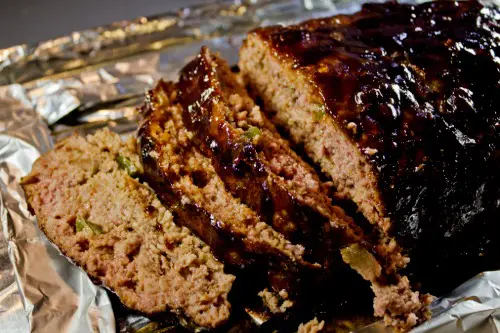
Meatloaf is a nostalgic comfort food for many Americans, often bringing back memories of family dinners and grandma’s secret recipe, according to John Mitzewich from The Spruce Eats. But to a lot of foreigners, it’s… confusing. It’s essentially ground beef baked in a loaf shape, sometimes with ketchup slathered on top, and served in thick, dense slices. The texture can be strange to those used to more refined meat dishes, and the presentation doesn’t help its case.
In many cultures, meat is meant to be showcased, not molded into a rectangle and served like cake. People from Europe, in particular, often associate it with school cafeteria food or wartime rationing. It doesn’t help that meatloaf can range from delicious to depressingly dry, depending on who’s making it. To non-Americans, it often feels like a bland brick of mystery meat.
3. Sloppy Joes

Sloppy Joes are messy, saucy sandwiches made from ground beef, onions, ketchup, and Worcestershire sauce, all slapped between hamburger buns. Kids in the U.S. love them, especially at summer camp or school lunches, according to Grub Americana. But for many foreigners, they’re a head-scratcher. The texture is wet and loose, making it difficult to eat without it falling apart in your hands.
People from countries where sandwiches are neatly stacked and balanced often find Sloppy Joes borderline chaotic. The flavor profile—sweet, salty, and a little tangy—can also be odd to those who aren’t expecting it. Some say it tastes more like a sauce accident than a planned meal. It’s one of those dishes you probably have to grow up eating to truly love.
4. Corn Dogs

Corn dogs are the poster child for American fair food: a hot dog on a stick, dipped in sweet cornmeal batter, then deep-fried. They’re fun, they’re nostalgic, and they’re undeniably American, Rachel Freeman from Thrillist reports. But many foreigners can’t get past the sugary batter and the idea of deep-frying a sausage on a stick. It’s a food that feels like it belongs more in a cartoon than on a plate.
People from countries where sausages are artisanal and cherished often feel that corn dogs are a strange bastardization of a good thing. The combination of sweet and savory can be too jarring for unfamiliar palates. Plus, the idea of eating a hot dog on a stick like it’s dessert just doesn’t sit well with some. It’s indulgent, chaotic, and very American—which is exactly why some folks from abroad just don’t get it.
5. Biscuits and Gravy

In the Southern U.S., biscuits and gravy are the ultimate comfort food—fluffy biscuits smothered in creamy, peppery sausage gravy. But to many foreigners, especially Brits, the dish is both visually and conceptually strange. For starters, American “biscuits” are nothing like the sweet, crunchy treats they know as biscuits (aka cookies). Then there’s the gravy, which looks suspiciously like wallpaper paste to the uninitiated.
The flavor, while rich and savory, can be overwhelming or greasy to those used to lighter breakfasts. Some travelers report being unsure whether it’s breakfast, lunch, or a heart attack waiting to happen. The whole experience feels heavy and unfamiliar, especially if you’re expecting jam and tea. For many, biscuits and gravy are an acquired taste—and some never acquire it.
6. Root Beer
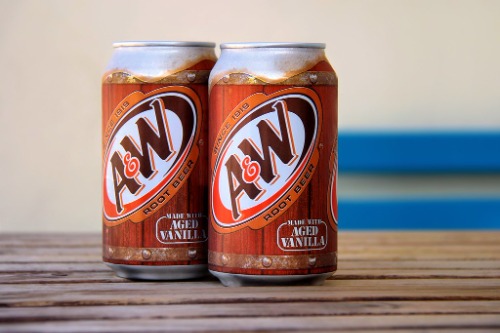
Okay, not a meal—but root beer gets its own spot because of how widely disliked it is by many non-Americans. It’s carbonated, sweet, and smells kind of like toothpaste or cough syrup to people who didn’t grow up drinking it. The taste is often described as medicinal, and for some Europeans, it’s downright offensive to the palate. Australians especially have a strong dislike for it.
This is partly because root beer’s main flavor, sassafras, is unlike anything used in European or Asian drinks. And once you add ice cream to make a float? Even more confusing. Americans may love it for the nostalgia, but to many outsiders, it’s a fizzy, minty disaster in a can. Cultural context makes all the difference here.
7. Jell-O Salad
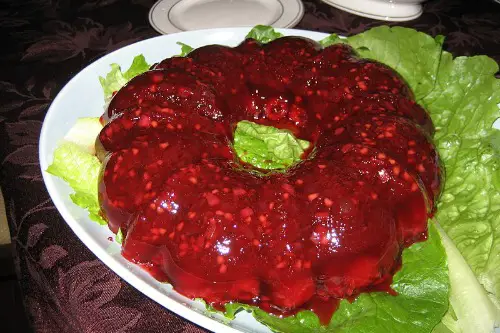
Jell-O salad is one of the most bewildering American inventions to foreign eyes. It’s sweet gelatin filled with fruit, vegetables, marshmallows—or even meat or tuna in retro versions. The concept of calling this a “salad” is confusing enough, but the texture and mix of flavors can be downright alarming. Most people from other countries think it belongs at a science experiment, not a dinner table.
It saw its heyday in the mid-20th century but still pops up at family potlucks and church gatherings. Foreigners often can’t wrap their heads around why gelatin is a vehicle for savory ingredients. Some try to be polite and give it a bite but usually end up pushing it around the plate. It’s the ultimate example of “just because you can doesn’t mean you should.”
8. Chicken and Waffles
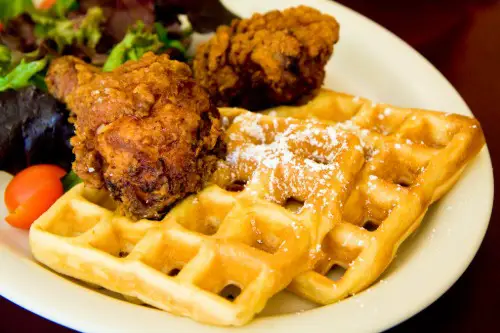
Chicken and waffles combine crispy fried chicken with syrup-covered waffles—a sweet and savory pairing Americans love. To many foreigners, though, this combo makes zero sense. They can’t figure out whether it’s breakfast, dinner, or dessert, and the syrup throws them off completely. Waffles are supposed to be sweet, and fried chicken is supposed to be savory—so why eat them together?
The dish has deep roots in soul food and Southern cuisine, and for fans, it’s the perfect balance of crunchy, soft, salty, and sweet. But for those unfamiliar with that tradition, it feels like a flavor mismatch. Europeans in particular tend to raise an eyebrow at the idea of maple syrup on meat. It’s an iconic dish in the U.S., but elsewhere, it’s met with polite confusion—or outright rejection.
9. Casseroles

The American casserole is a one-dish wonder: a mix of proteins, starches, canned soup, and maybe some frozen peas, baked until bubbly. It’s a staple at potlucks and family dinners, but to many foreigners, it’s an alarming mishmash. The textures can be mushy, and everything tends to blend together in a beige, cheesy mass. There’s no clear “main” or “side,” just a blob of comfort.
To people used to meals with more structure—meat, veg, starch, all separated—a casserole can seem like an unappetizing mess. Add in the frequent use of processed ingredients like canned cream of mushroom soup, and it starts to feel less like home cooking and more like a chemistry experiment. In places where fresh ingredients are prized, this approach to food can be off-putting. Still, Americans adore them, and the nostalgia factor runs deep.
10. American Cheese
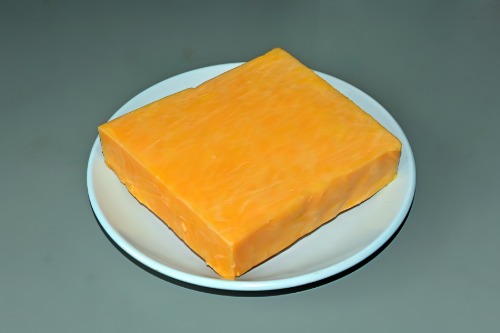
American cheese, the bright orange, perfectly melty staple of grilled cheese sandwiches and cheeseburgers, is beloved in the U.S. But many foreigners are quick to point out that it’s not technically cheese—it’s processed cheese product. Its plasticky texture and unnatural color can be deeply unsettling to those used to aged cheddar or creamy brie. Some Europeans have even compared it to edible plastic.
While it melts beautifully, its taste is often described as bland or artificial. In countries with strict cheese-making traditions, American cheese feels like a culinary compromise. And let’s be honest: if you’ve never had it as a kid, you probably won’t appreciate its unique place in American comfort food. It’s the ultimate example of function over flavor.
11. Twinkies

Twinkies are sugary, shelf-stable snack cakes with a cult following in the U.S. But abroad, they’re often seen as chemical-laden junk food. The texture is too soft, the filling too artificial, and the sweetness completely over-the-top for most non-American palates. They’re less of a dessert and more of a nostalgia-fueled sugar bomb.
People used to patisseries and artisanal sweets usually find Twinkies underwhelming—or even revolting. There’s something about that spongy texture and vaguely synthetic cream that turns people off. While they’ve been immortalized in pop culture, their appeal doesn’t translate well overseas. For most foreigners, one bite is more than enough.
12. Deep-Fried Everything (State Fair Food)
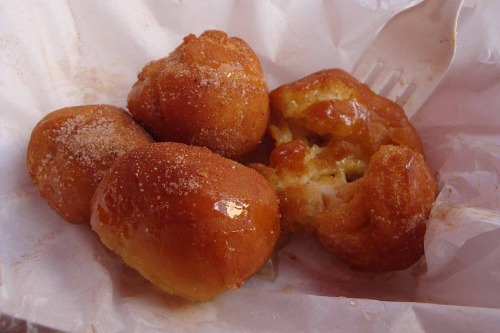
From deep-fried Oreos to deep-fried butter (yes, really), state fair food in America is a spectacle. It’s all about indulgence, novelty, and pushing the limits of what can be dunked in batter and oil. But foreigners often react with a mix of horror and fascination. Many can’t believe people eat these things seriously—and sometimes proudly.
In cultures where freshness and moderation are key, deep-fried candy bars seem more like a dare than a dish. Even the idea of eating deep-fried soda (another real thing) feels like something from a dystopian cookbook. It’s excessive, greasy, and unapologetically over-the-top. That’s precisely the charm for Americans—but it’s definitely not for everyone.
13. Tuna Casserole

Tuna casserole is one of those mid-century dishes that just won’t die. Made with canned tuna, egg noodles, peas, and usually a can of cream of mushroom soup, it’s a common comfort food in many American households. But foreigners are often baffled—and repulsed—by the combination of fish and dairy-based sauces. The smell alone is enough to raise eyebrows.
In many cultures, tuna is reserved for fresh dishes like sushi or Mediterranean salads. Mixing it into a hot, creamy casserole feels sacrilegious. The texture can be mushy, the flavor aggressively fishy, and the overall impression is… questionable. It’s one of those dishes where love is definitely not universal.
14. Peanut Butter and Jelly Sandwich

Peanut butter and jelly is arguably the most iconic American lunch for kids. But for a lot of foreigners, especially Europeans and Asians, this combo is just strange. The sweetness of the jelly paired with the thick, salty peanut butter can be off-putting if you didn’t grow up with it. It’s also a textural challenge—sticky, sweet, and dense all at once.
Many people abroad are used to savory sandwiches and find the PB&J too cloying for a main meal. The fact that it’s eaten as a staple, not just an occasional treat, adds to the confusion. While Americans see it as the epitome of simple comfort food, others see it as an odd snack gone rogue. Love it or hate it, it’s peak Americana.


